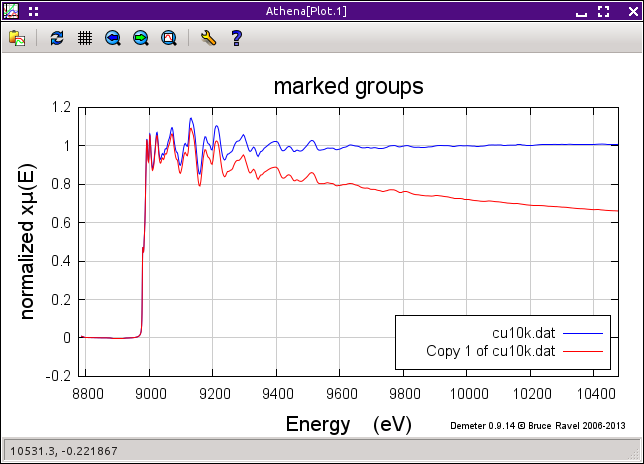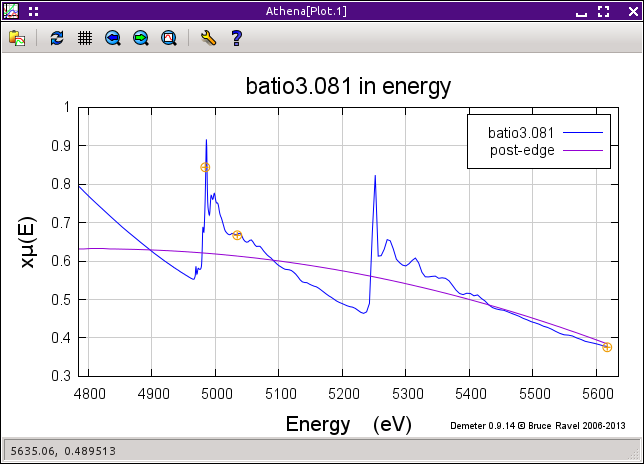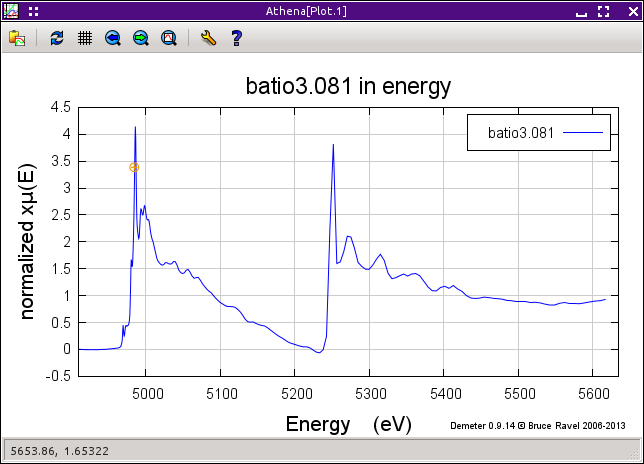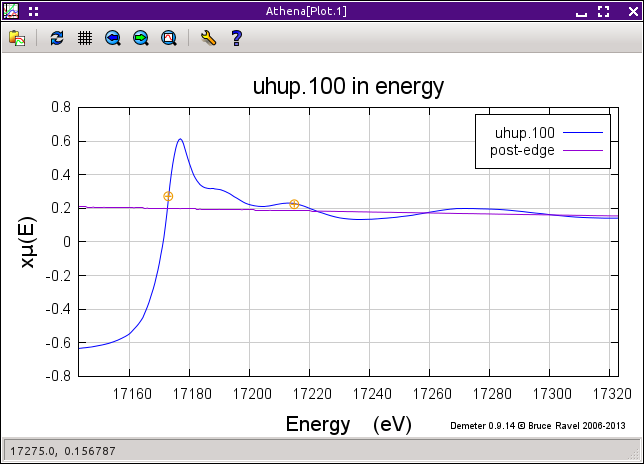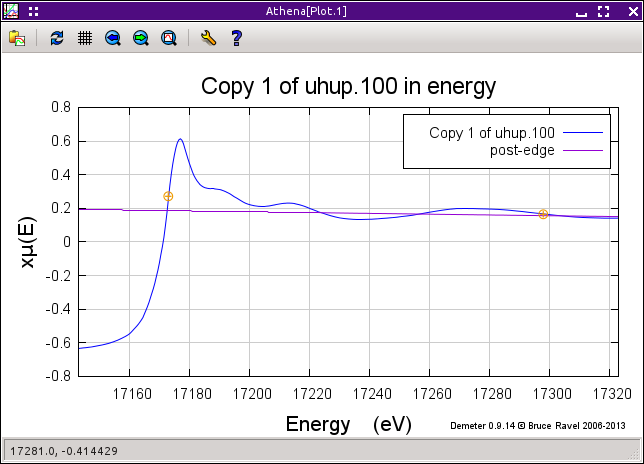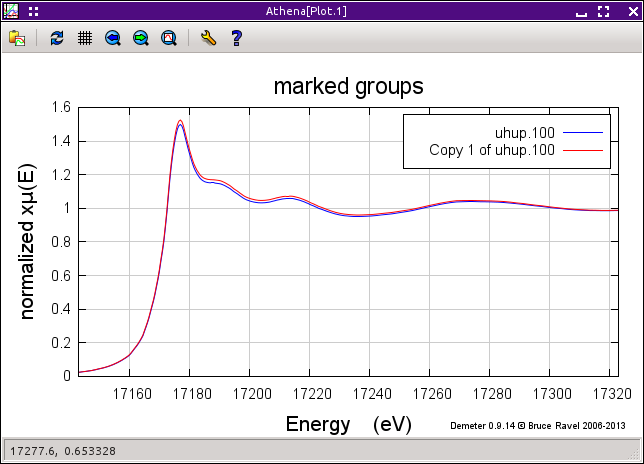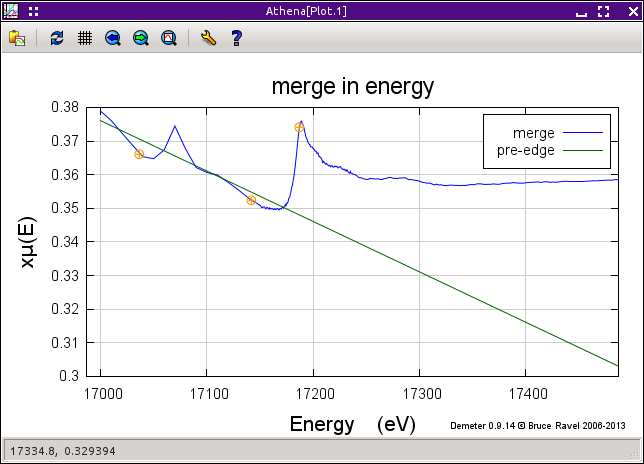Normalization
Normalization is the process of regularizing your data with respect to
variations in sample preparation, sample thickness, absorber
concentration, detector and amplifier settings, and any other aspects
of the measurement. Normalized data can be directly compared,
regardless of the details of the experiment. Normalization of your
data is essential for comparison to theory. The scale of the μ(E)
and χ(k) spectra computed by FEFF is chosen for comparison
to normalized data.
The relationship between μ(E) and χ(k) is:
μ(E) = μ₀(E) * (1 + χ(E))
which means that
χ(E) = (μ(E) - μ₀(E)) / μ₀(E)
The approximation of μ₀(E) in an experimental spectrum is a
topic that will be discussed shortly.
This equation is not, in fact, the equation that is commonly used to
extract χ(k) from the measured spectrum. The reason that
equation is problematic is the factor of μ₀(E) in the
denominator. In practice, one cannot trust the μ₀(E) to be
sufficiently well behaved that it can be used as a multiplicative
factor. An example is shown in
[(Left% INCLUDE imageref text="the figure below" label="bkg_normzerocross" %].
In the case of the gold spectrum, the detector setting were such that
the spectrum crosses the zero-axis. Dividing these spectra by
μ₀(E) would be a disaster as the division would invert the phase
of the extracted χ(k) data at the point of the zero-crossing.
To address this problem, we typically avoid functional normalization
and instead perform an edge step normalization.
The formula is
χ(E) = (μ(E) - μ₀(E)) / μ₀(E₀)
The difference is the term in the denominator. μ₀(E₀) is the
value of the background function evaluated at the edge energy. This
addresses the problem of a poorly behaved μ₀(E) function, but
introduces another issue. Because the true μ₀(E) function should
have some energy dependence, normalizing by μ₀(E₀) introduces an
attenuation into χ(k) that is roughly linear in energy. An
attenuation that is linear in energy is quadratic in wavenumber.
Consequently, the edge step normalization introduces an artificial
σ² term to the χ(k) data that adds to whatever thermal
and static σ² may exist in the data.
This artificial σ² term is typically quite small and
represents a much less severe problem than a misbehaving functional
normalization.
The normalization algorithm
The normalization of a spectrum is controlled by the value of
the «e0»,
«pre-edge range», and
«normalization range» parameters. These
parameters are highlighted in
this screenshot.
The «pre-edge range» and
«normalization range» parameters define two
regions of the data -- one before the edge and one after the edge. A
line is regressed to the data in the
«pre-edge range» and a polynomial is
regressed to the data in the «normalization range».
By default, a three-term (quadratic) polynomial is used as
the post-edge line, but its order can be controlled using the
«normalization order» parameter. Note that
all of the data in the
«pre-edge range» and in the
«normalization range» are used in the
regressions, thus the regressions are relatively insensitive to the
exact value of boundaries of those data ranges.
The criteria for good pre- and post-edge lines are a bit subjective.
It is very easy to see that the parameters are well chosen for these
copper foil data. Both lines on the left side of
this figure
obviously pass through the middle of the data in their respective ranges.
Data can be plotted with the pre-edge and normalization lines using
controls in the energy plot tabs. It is a very good idea
to visually inspect the pre-edge and normalization lines for at least
some of your data to verify that your choice of normalization
parameters is reasonable.
When plotting the pre- and post-edge lines, the positions of the
«pre-edge range», and
«normalization range» parameters are shown
by the little orange markers. (The upper bound of the
«normalization range» is off screen in the
plot above of the copper foil.)
The normalization constant, μ₀(E₀) is evaluated by extrapolating
the pre- and post-edge lines to «e0» and
subtracting the e0-crossing of the pre-edge line from the e0-crossing
of the post-edge line. This difference is the value of the
«edge step» parameter.
The pre-edge line is extrapolated to all energies in the measurement
range of the data and subtracted from μ(E). This has the effect
of putting the pre-edge portion of the data on the y=0 axis. The
pre-edge subtracted data are then divided by μ₀(E₀). The result
is shown on the right side of
the figure above.
 In version 0.9.18, an option was added to the context menu attached to
the «edge step» label for approximating the
error bar on the edge step.
In version 0.9.18, an option was added to the context menu attached to
the «edge step» label for approximating the
error bar on the edge step.
The flattening algorithm
For display of XANES data and certain kinds of analysis of μ(E)
spectra, ATHENA provides an additional bit of sugar. By
default, the flattened spectrum is plotted
in energy rather than the normalized spectrum. In
the following plot,
flattened data are shown along with a copy of the data that has the
flattening turned off.
To display the flattened data, the difference in slope and
quadrature between the pre- and post-edge lines is subtracted from the
data, but only after «e0». This has the
effect of pushing the oscillatory part of the data up to the y=1
line. The flattened μ(E) data thus go from 0 to 1. Note that
this is for display and has no impact whatsoever on the extraction of
χ(k) from the μ(E) spectrum.
This is a nice way of displaying XANES data as it removes many
differences in the shape of the post-edge region from the data.
Computing
difference spectra
or
self absorption corrections,
performing
linear combination fitting
or
peak fitting,
and many other chores often benefit from using flattened data rather than
simply normalized data.
This idea was swiped from SixPACK.
Getting the post-edge right
It is important to always take care selecting the post-edge range.
Mistakes made in selecting the «normalization range»
parameters can have a profound impact on the extracted χ(k)
data. Shown below
is an extreme case of a poor choice of
«normalization range» parameters. In this
case, the upper bound was chosen to be on the high energy side of a
subsequent edge in the spectrum. The resulting
«edge step»
is very wrong and the flattened data are highly distorted.
The previous example is obviously an extreme case, but it illustrates
the need to examine the normalization parameters as you process your
data. In many cases, subtle mistakes in the choice of normalization
parameters can have an impact on how the XANES data are interpreted
and in how the χ(k) data are normalized.
In this example,
the different choice for the lower bound of the
normalization range (42 eV in one case, 125 eV in the other) has an
impact on the flattening of these uranium edge data data,
which in turn may have in impact in the evaluation of
average valence in the system. The small difference in the
«edge step» will also slightly attenuate
χ(k).
Getting the pre-edge right
The choice of the «pre-edge range»
parameters is similarly important and also requires visual
inspection. A poor choice can result in an incorrect value of
the «edge step» and in distortions to the
flattened data. In
the following spectrum,
we see the presence of a
small yttrium K-edge at 17038 eV which distorts the pre-edge for a
uranium LIII-edge spectrum at 17166 eV as shown in
the figure below.
In this case the
«pre-edge range» should be chosen to be
entirely above the yttrium K-edge energy.
Measuring and normalizing XANES data
If time and the demands of the experiment permit, it is always a good
idea to measure significant amounts of the pre- and post-edge
regions. About 150 volts in the pre-edge and at least 300 volts in
the post-edge is a good rule of thumb. With shorter regions, it may
be difficult to find normalization boundaries that provide good
normalization lines. Without a good normalization, it can be
difficult to compare a XANES measurement quantitatively with other
measurements.
Reducing the «normalization order» might
help in the case of limited post-edge range. When measuring XANES
spectra in a step scan, it is often a good idea to add several widely
spaced steps to the end of a scan to extend the «normalization range» without adding excessive time to scan.
![[Athena logo]](../../images/pallas_athene_thumb.jpg)
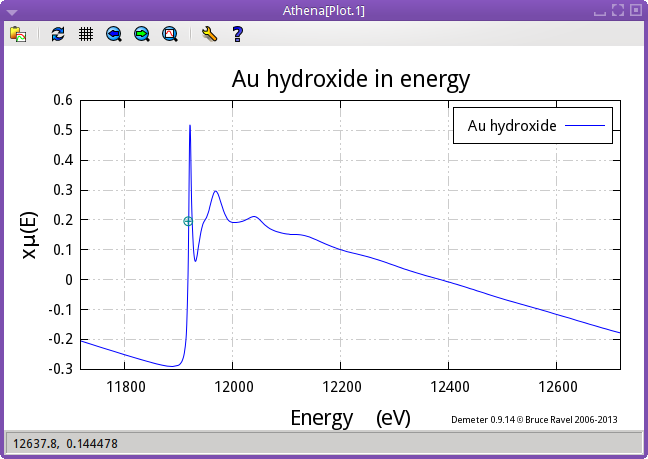
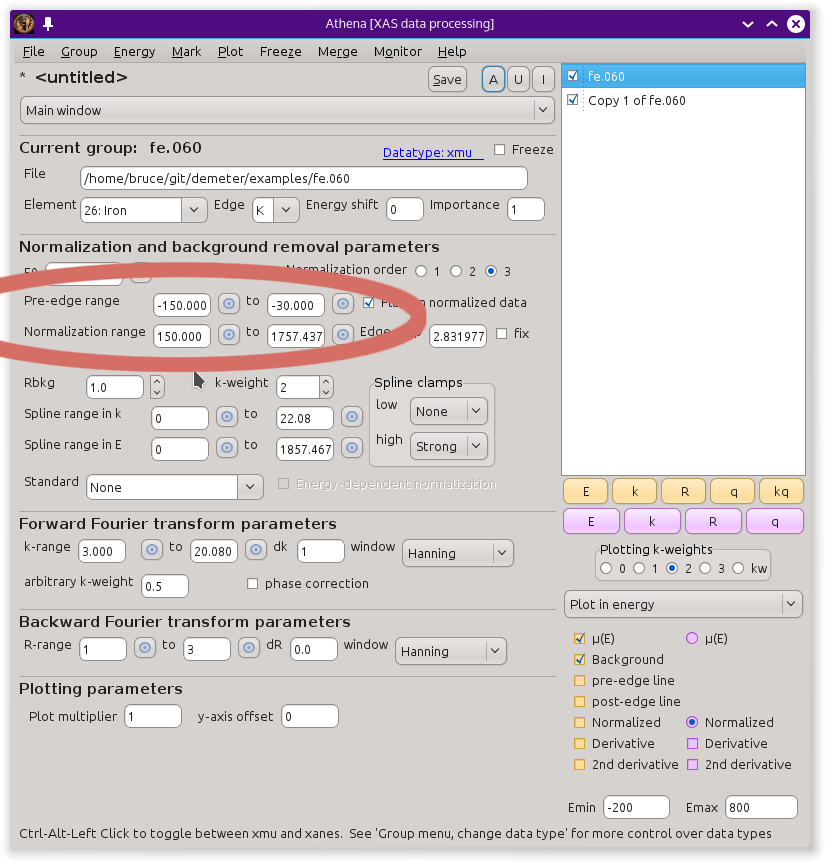
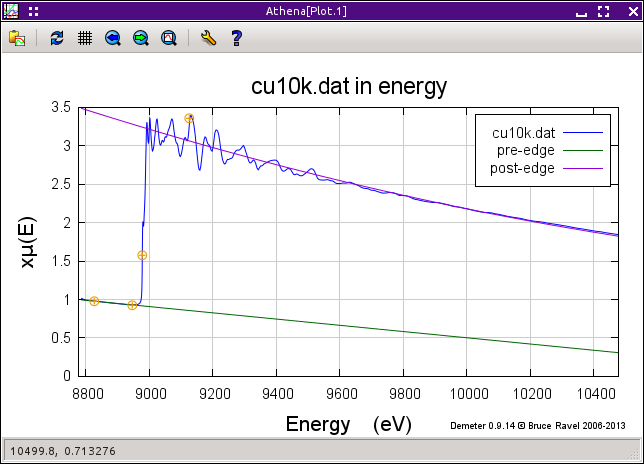
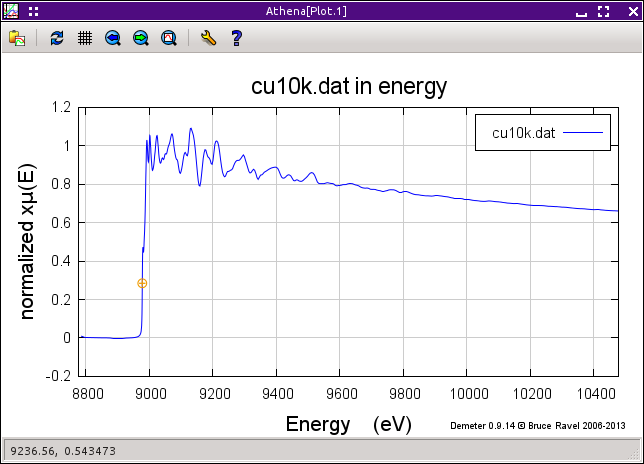
 In version 0.9.18, an option was added to the context menu attached to
the
In version 0.9.18, an option was added to the context menu attached to
the 